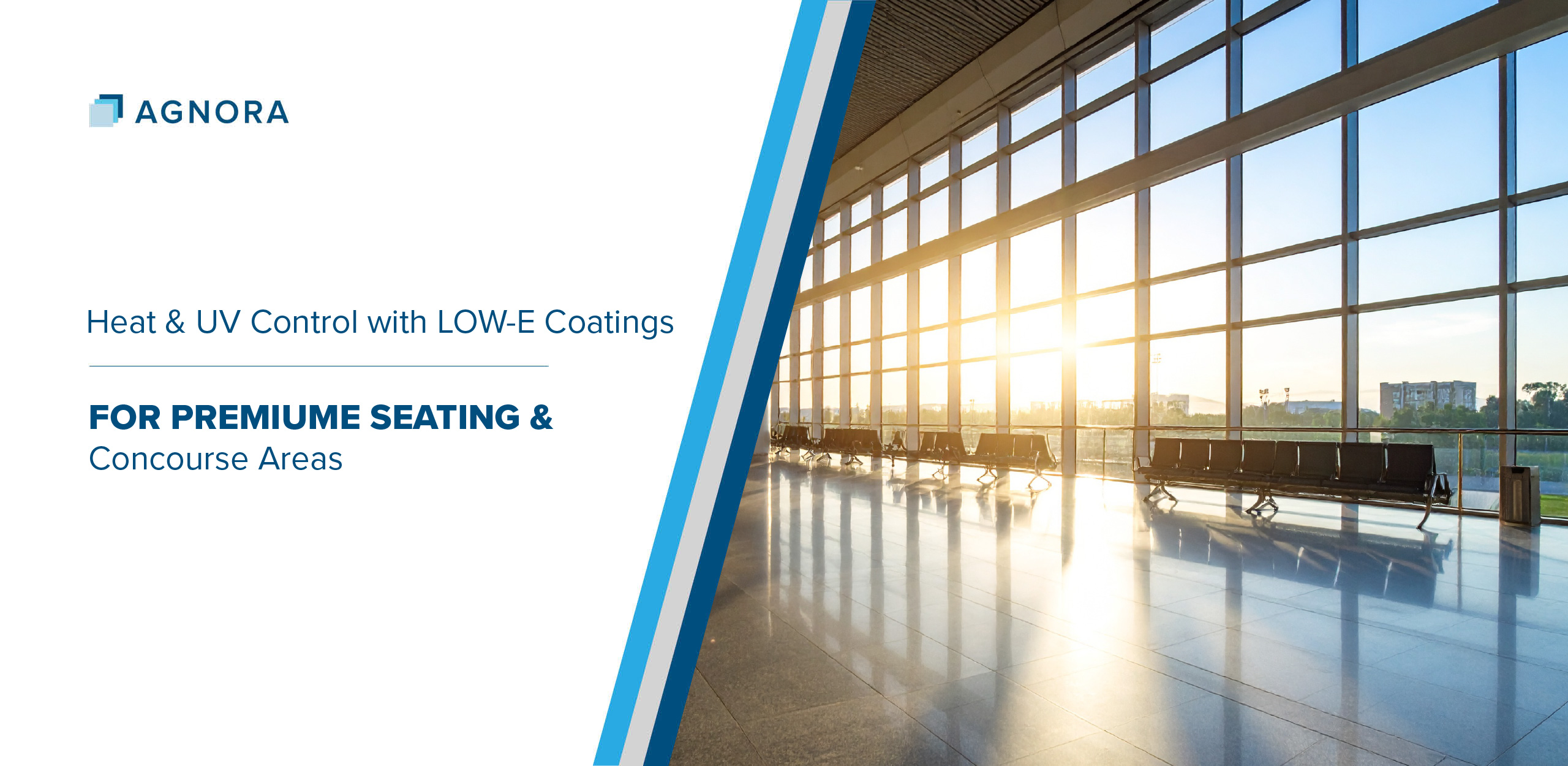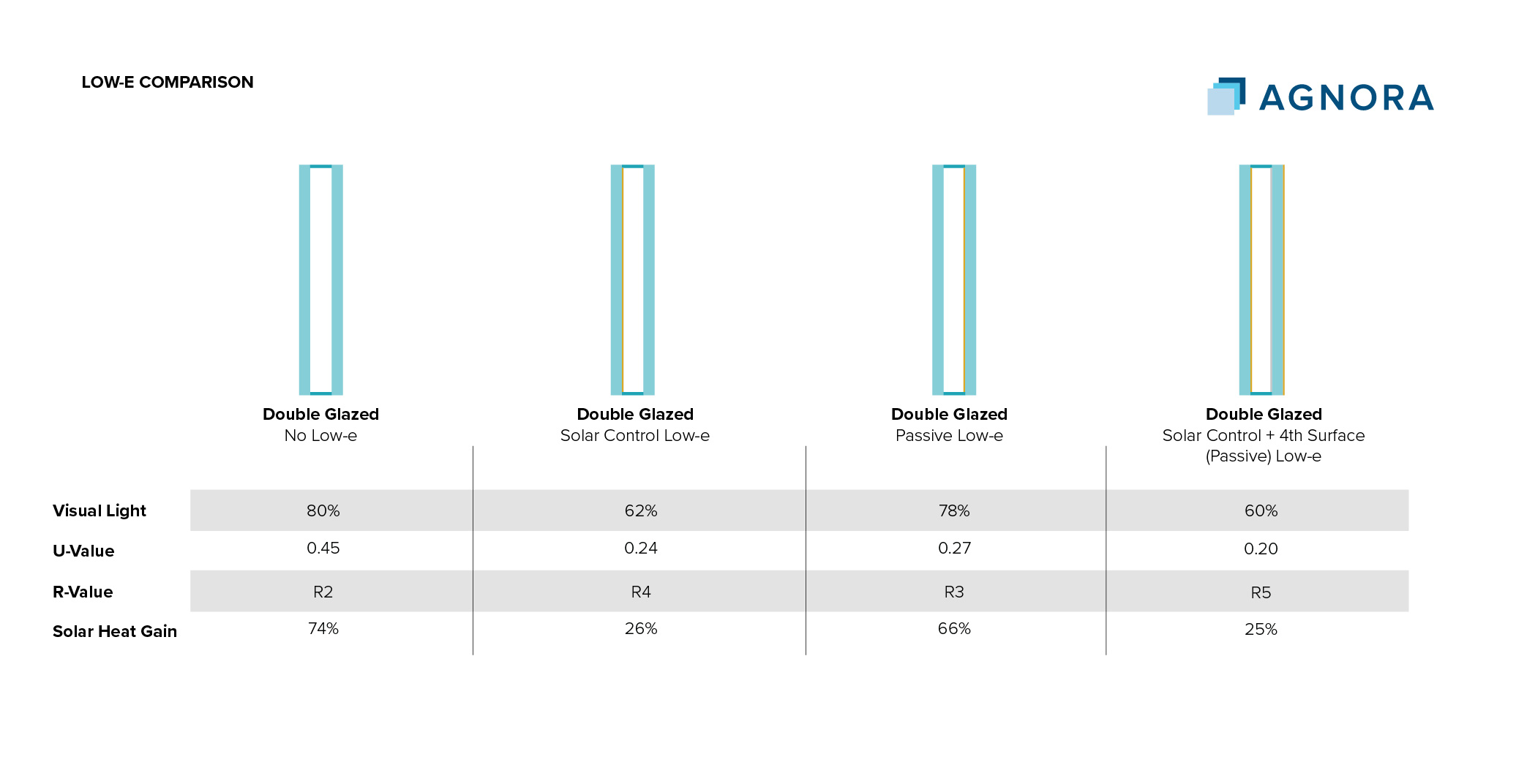
June 1, 2025
Low-emissivity (Low-E) glass coatings are one of the most effective tools in a glazing professional’s arsenal for enhancing energy performance. By controlling both U-value (heat loss) and solar heat gain (heat gain), Low-E coatings help building owners, architects, and glazing contractors achieve better insulation, occupant comfort, and code compliance. As energy codes tighten and sustainability becomes a core design value, understanding how Low-E functions—and where it adds the most value—is key to smarter glass specification.
U-Value: Minimizing Heat Loss
U-value measures the rate of heat transfer through a building element. The lower the number, the better the insulating performance.
Traditional clear glass has a U-value of approximately 1.0 (BTU/hr·ft²·°F). A double-glazed IGU with Low-E and argon fill can drop that value to 0.25–0.30, depending on the configuration. Triple-pane systems with Low-E on multiple surfaces can reach as low as 0.15, meeting or exceeding Passive House standards.
Key benefits of improved U-value include:
-
Reduced HVAC loads, leading to lower energy bills.
-
Improved thermal comfort for occupants, especially near large glazed areas.
-
Better condensation resistance, especially in colder climates.
When codes (like IECC or ASHRAE 90.1) call for improved insulation, Low-E is often the most efficient—and cost-effective—path to compliance.
What is Low-E and How Does It Work?
Low-E stands for low emissivity, referring to a microscopically thin metallic oxide coating applied to one or more surfaces of the glass. Its primary purpose? To reflect radiant heat back toward its source, while still allowing visible light to pass through. In cold climates, interior heat is retained—reducing heating loads. In warm climates, external solar radiation is reflected—reducing cooling costs. The result is a more thermally efficient envelope, regardless of season or orientation. There are two main types of Low-E coatings:
Passive Low-E (pyrolytic):
Hard-coated and typically used in heating-dominant regions.
Solar control Low-E (sputtered):
Soft-coated and engineered for superior solar performance.
Solar Heat Gain: Controlling the Sun
Solar Heat Gain Coefficient (SHGC) measures how much solar radiation passes through a window and becomes heat. A lower SHGC indicates less solar gain—crucial for keeping cooling costs down.
Clear glass typically has an SHGC of 0.85. A high-performance solar control Low-E coating can bring this down to 0.20–0.30—without heavily tinting or darkening the glass.
Benefits of solar heat gain control:
-
-
Glare management without sacrificing views or daylighting.
-
Optimized occupant comfort in sun-exposed spaces.
When specified strategically—by elevation and climate zone—Low-E coatings balance natural light, visibility, and solar control. Pairing the right coating with the right orientation is key to maximizing both aesthetics and performance.
Low-E in Action: Configurations and Real-World Use
Common Low-E glass configurations include:
-
Double-glazed IGU: Low-E on surface #2 or #3, with argon fill.
-
Triple-glazed IGU: Multiple Low-E coatings (e.g., surfaces #2 and #5).
-
Laminated + Low-E: Combined solar control and impact/safety performance.
Low-E is a mainstay in everything from luxury residential to net-zero commercial projects. When paired with warm-edge spacers, high-quality seals, and precision fabrication, its performance is even more pronounced. At AGNORA, we work with advanced coatings from Guardian, Vitro, Saint-Gobain and others—bringing high-performance Low-E into stunning, oversized architectural expressions.
